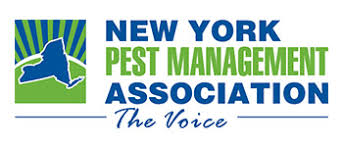- Things you will need:
- Wrapping Paper – Newspapers are good for miscellaneous items that can be easily cleaned, as the ink tends to soil items. Moving Right Along has unprinted newspaper available at our showroom.
- Boxes – You will need many different sizes. All boxes should have top flaps so they can be closed and sealed up. Moving Right Along has a full assortment of single-wall and double-wall boxes. Double-wall boxes are extra sturdy, hence great for fragile items. A good alternative if you choose to use store boxes ( check for hitchhikers
 ) is liquor cartons, as they contain dividers, which can make them ideal for packing glasses, goblets, vases, etc.
) is liquor cartons, as they contain dividers, which can make them ideal for packing glasses, goblets, vases, etc. - Tape – The best tape for boxes is 2-inch PVC tape.
- When packing books or records, stand them on end and use small boxes.
- Small pictures can be wrapped and stood up in normal packing boxes with other goods. Extremely large pictures should be packed by your mover in one of his specially designed picture or mirror cartons for insurance purposes.
- Desk or “gadget” drawers should be empty to avoid jamming the mechanism of the drawers in the piece of furniture.
- Do not pack any flammables, combustibles, or explosives. The safety of the shipment is our primary concern. Movers are not allowed to transport aerosol cans, paint thinner, gasoline, or any flammable or explosive material, such as barbeque tanks – even if they are empty.
- Stereo, electronic, video and computer equipment should be packed prior to your move, or notify your mover so he can bring along the proper materials.
- For all your hanging clothing, inquire with your mover about wardrobe cartons. These can also be used for large, clumsy items such as pillows, toys or blankets.
PACKING IN THE KITCHEN
Packing is much more convenient, and less tiring when you have a good work area. It is suggested that you clear the kitchen table and do your packing on the table. Keep in mind that when you are packing fragile articles you should plan to pack the heaviest objects toward the bottom of the carton; more delicate articles should be packed closer to the top of the carton.
The first thing to do is to lay out flat on the table a sizable stack of packing paper.
Select a sturdy, medium-sized carton. Line the bottom of the carton with several layers of crumpled up packing paper for additional cushioning.
PACKING FLATWARE
1. Place one plate in approximately the center of your packing paper.
2. Grasp about two sheets of paper at one corner. Pullover plate so as to completely cover plate. Stack the second plate on the first plate.
3. Grasp the second corner of your paper. Pullover and cover stacked plates.
4. Stack third plate. Take remaining two corners (one at a time) and fold each your stack of plates.
5. Turn your wrapped stack of plate upside down onto your packing paper.
6. Re-wrap entire bundle. Follow same wrapping procedure as before. Start with one corner of packing paper, and pull two sheets over the bundle, cover bundle with next corner, then the third corner, and finally the fourth.
7. Seal the bundle with masking tape.
8. Place the bundle of flatware in carton so the plates are standing on edge.
PACKING PICTURES
Small pictures can be wrapped and stood up in normal packing boxes with other goods.
Extremely large pictures, such as the type commonly found hanging over a sofa or mantle (usually measuring 24” X 36”) should be packed by your mover in one of his specially designed picture or mirror cartons.
Many pictures, however, that are just a little too large to fit in regular cartons (16” X 20” or 18” X 24”) can be packed in a self-devised picture carton.
1. Select a carton that is larger than your picture when open at both ends.
2. Open the bottom of the carton and then flatten the carton. Seal one of the open sides with your tape.
3. Lay your picture face down, on several sheets of packing paper, which have been spread out so as to be almost twice as wide as your picture.
4. Fold the paper over picture and tape. Insert the picture into carton and seal carton.
PACKING LAMPS
If you have several tall table lamps, place them each in the carton so that the base of one lamp is next to the top of next lamp. Alternate them. This will make them fit better in the carton.
When all lamps are packed in the carton, fill the carton with plenty of wadded-up packing paper. Be generous. Mark “Fragile” and “Lamps” in large, clear letters on all sides of the carton.
PACKING CUPS AND GLASSES
Cups and glasses may be “nested” (one placed inside another) and three or four wrapped in a bundle.
Tear or cut up some small sheets of paper. Use at least a couple of small sheets between each glass and cup as protective lining.
1. Take first glass and line with a couple of sheets of your cut-up paper.
2. Place second glass (or cup) inside the first one. Line with two more sheets of paper.
3. Using your best judgment, nest three or four glasses (or cups) and lay these on your stack of wrapping paper in a diagonal manner, off center closer to your body.
4. From the corner closest to you, grasp two sheets of wrapping paper. Wrap around your glasses (or cups).
5. Grasp next corner of wrapping paper and wrap around your glasses.
6. Repeat procedures with remaining corners of wrapping paper. Then roll into a bundle (much the same as a butcher might wrap a package of hamburgers).
7. If you have collected some liquor cartons with dividers, pack glasses, cups, and stemware in these boxes. If your bundle does not fill to the top of the compartment, stuff additional wadded-up packing paper in the compartment to fill it up.
If you don’t have liquor cartons then pack your glasses, cups, and stemware in boxes with your other dishes fitting them in where ever you find some spaces. Be sure these articles are toward the top of your carton.











